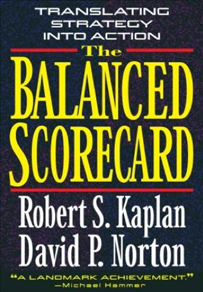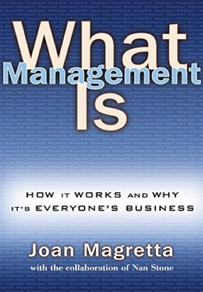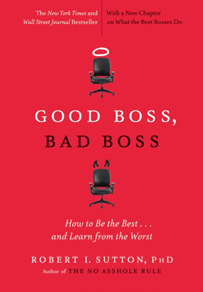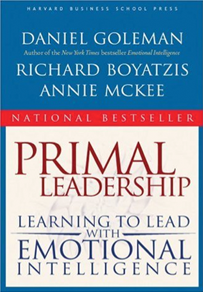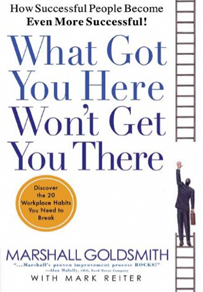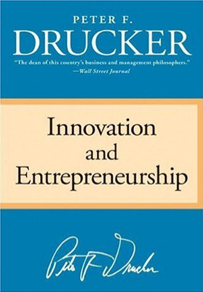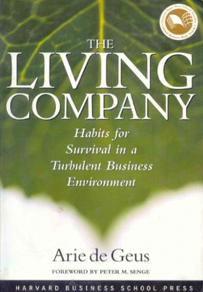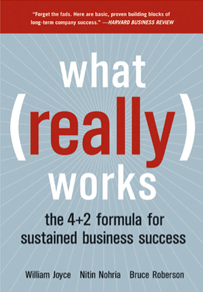Suggested Reading
Browse by Subject
-
The Balanced Scorecard
Translating Strategy into Action
by Robert Kaplan and David Norton
The “Balanced Scorecard” is a framework, which translates a company's vision and strategy into a coherent set of performance measures. The four perspectives of the scorecard—financial measures, customer knowledge, internal business processes, and learning and growth—offer a balance between short-term and long-term objectives, between outcomes desired and performance drivers of those outcomes, and between hard objective measures and softer, more subjective measures. In the first part, Kaplan and Norton provide the theoretical foundations for the Balanced Scorecard; in the second part, they describe the steps organizations must take to build their own Scorecards; and, finally, they discuss how the Balanced Scorecard can be used as a driver of change. Kaplan and Norton's pioneering “Balanced Scorecard” is important reading for those who seek to measure and manage successful business strategy.
-
What Management Is
How It Works and Why It’s Everyone’s Business
by Joan Magretta and Nan Stone
‘What Management Is” presents the basic principles of management simply, but not simplistically. Joan Magretta, cuts through the clutter and confusion, explaining both the logic of successful organizations and how that logic is put into practice. Magretta uses examples – contemporary and historical – to bring to life management's High Concepts: value creation, business models, competitive strategy, and organizational design. And she explains the often-unwritten rules of execution that characterize the best-performing organizations. Most management books preach a single formula, “What Management Is” examines the best that has been thought and written with a practical eye for what matters in real organizations. Whether you're new to the field or a seasoned executive, this book will give you a firm grasp on what it takes to make an organization perform.
-
Why Smart Executives Fail
And What You Can Learn from Their Mistakes
by Sydney Finkelstein
“Why Smart Executives Fail,” Sydney Finkelstein, explores corporate mistakes—what they are, why they occur, and what managers, leaders, and investors can do about them. All too often, once successful companies lose their luster and begin to stumble. This has happened at top companies like GM, Motorola, Quaker, and Sony, all of which have very smart, hard-working senior executives. How can you tell if it’s about to happen at your own company? In "Why Smart Executives Fail,” Finkelstein lays out the common causes behind failures in wildly different types of companies. He explains the seven habits of spectacularly unsuccessful people that drive smart managers to make catastrophic mistakes. As much about psychology as it is about business, "Why Smart Executives Fail" tells the stories of more than fifty great business disasters and includes interviews with many of their leaders, in which they explain what really led to their disastrous decisions.
-
Good Boss, Bad Boss
How to Be the Best—and Learn from the Worst
by Robert Sutton
In “Good Boss, Bad Boss,” Bob Sutton takes a common sense approach on what really differentiates the great bosses from the ones who are just good, so-so, or even worse. The main theme that runs throughout the book—which brings together the diverse lessons and is a symbol of great bosses: "They work doggedly to "stay in tune" with how their followers (and superiors, peers, and customers) react to what they say and do." The best bosses are intensely aware that their success depends on having the self-awareness to control their moods and actions, to accurately interpret their impact on others, and to make adjustments on the go that continuously ignite effort, dignity, and pride among their people. Bob Sutton’s has written some great books, but this is the one to start with.
-
Primal Leadership
Learning to Lead with Emotional Intelligence
by Daniel Goleman, Richard Boyatzis, and Annie McKee
Great leaders move us. They ignite our passion and inspire the best in us. When we try to explain why they are so effective, we speak of strategy, vision, or powerful ideas. But the reality is much more primal: Great leadership works through the emotions. Drawing from decades of research within world-class organizations, the authors of “Primal Leadership” show that great leaders—whether CEOs or managers, coaches or politicians—excel not just through skill and ability, but by connecting with others using Emotional Intelligence competencies like empathy and self-awareness. No matter what leaders set out to do—whether it’s creating strategy or moving teams to action—their success depends on how they do it. The best leaders, the authors argue, have "resonance"—a powerful ability to drive emotions in a positive direction to get results—and can seamlessly interchange among a variety of leadership styles as the situation demands.
-
What Got You Here Won’t Get You There
How Successful People Become Even More Successful
by Marshal Goldsmith and Mark Reiter
Successful people are the hardest to convince that they need to change because they are already successful. The corporate world is filled with executives, men and women who are intelligent, skilled, and driven. But only a handful of them will ever reach their full potential. In “What Got You Here Won’t Get You There,” Marshall Goldsmith discusses the key beliefs of successful leaders and also the behaviors that hold them back. He addresses the fundamental problems that come with success and the twenty habits that prevent people from achieving greater levels of success. Goldsmith shares his years of experience in helping top executives change their behavior and improve their interpersonal skills. In “What Got You Here Won’t Get You There,” you’ll learn about the dangers of “winning too much”, adding too much value, refusing to share information, and taking too much credit for results. Using Goldsmith's straightforward, jargon free advice, anyone will benefit from this book, whether new manager or a rising senior executive.
-
Innovation and Entrepreneurship
by Peter Drucker
Like the discipline of management, which he helped found, Drucker believes that innovation and entrepreneurship must be undertaken as a purposeful and systematic discipline. Drucker suggests seven clear signs that indicate opportunity for business innovation: (1) unexpected success, (2) incongruity between reality and ideal, (3) identification of an unmet need, (4) changes in industry or market structure, (5) demographic shifts, (6) changes in public perception, and (7) discovery of new knowledge. By watching for these signs to identify an opportunity, then creating and acting on a systematic plan to deliver a valuable product, businesses can create new value.
"Innovation and Entrepreneurship" explains why business leaders must make innovation and entrepreneurship “a normal, ongoing, everyday activity, a practice in their own work and in that of their organization.” This classic book on innovation and entrepreneurship should be required reading for today’s business people. -
The Living Company
Habits for Survival in a Turbulent Business Environment
by Arie De Geus
In The Living Company, Arie de Geus reveals the keys to managing an organization for a long and prosperous life. He draws a sharp contrast between "living companies," the purpose of which is to fulfill their potential and perpetuate themselves as ongoing communities, and "economic companies," which are in business solely to produce wealth for a small group of individuals. De Geus contends that living companies manage for survival; economic companies manage for profit. Among a wide array of important factors, long-lived companies have four essential traits in common. At a minimum, these firms are sensitive to their environment in order to learn and adapt; cohesive, with a strong sense of identity; tolerant of unconventional thinking and experimentation; and conservative in financial policy to retain the resources that allow for flexibility. "The Living Company" is worthwhile to leaders at all levels.
-
Hidden Value
How Great Companies Achieve Extraordinary Results With Ordinary People
by Charles O’Reilly and Jeffrey Pfeffer
“Hidden Value” argues that the best companies win not by acquiring the right people—but by building the right organization. O'Reilly and Pfeffer warn that most companies place too much effort on attracting star performers while smart companies are doing something much more advantageous and far more difficult to copy - they're building organizations that make it possible for ordinary people at every level of an organization to do extraordinary things. The authors provide detailed case studies of several organizations in different industries - including Southwest Airlines, Cisco Systems, The Men's Wearhouse, and NUMMI - to illustrate how long-term success comes from value-driven, interrelated systems that align good people management with corporate strategy.
-
What Really Works
The 4+2 Formula for Sustained Business Success
by William Joyce, Nitin Nohria and Bruce Roberson
With hundreds of well-known management practices and prescriptions promoted by consultants and available to business, which are really effective and contribute to the growth and continued success of a company? Which do little or nothing? Through a 5-year study the authors set out to find the management practices that actually promote long-term growth and success. Analyzing data on 200 common management practices the authors developed a “4+2” (4 primary and 2 of 4 possible secondary) formula made up of practices that, if followed carefully, lead to sustained business success. Companies they identify as winners consistently followed successful practices in all four of the primary areas (strategy, execution, culture and structure) and any two secondary areas (talent, leadership, innovation, and mergers and partnerships). The key to long-term success, they argue, is implementing effective programs in the six areas simultaneously.


